NIL
NCAA Player Pay Deal Asks Deloitte to Measure the Unmeasurable
A massive NCAA settlement with student-athletes involves a mechanism for limiting name, image and likeness deals to “fair market value,” which could prove difficult for even the world’s largest accounting firm to reliably measure. The $2.8 billion House v. NCAA settlement calls for Deloitte LLP to set up a clearinghouse to analyze endorsements, partnerships, and […]
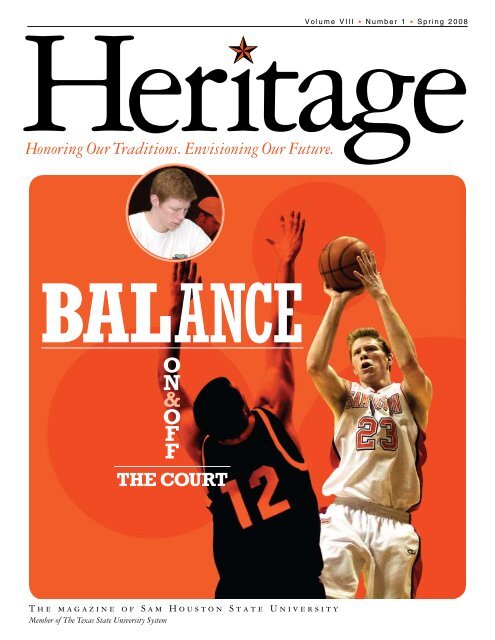
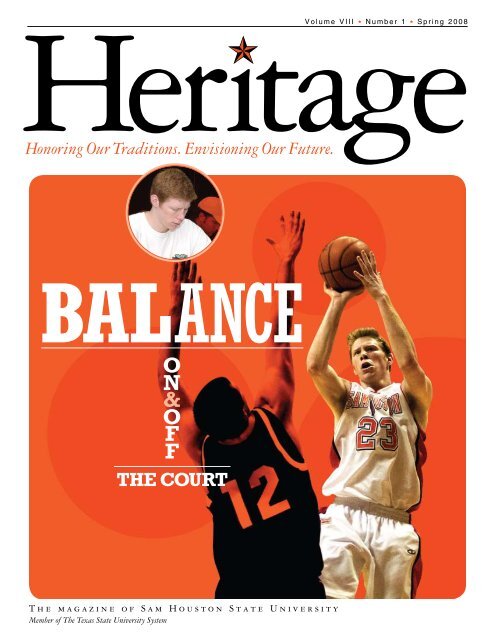

A massive NCAA settlement with student-athletes involves a mechanism for limiting name, image and likeness deals to “fair market value,” which could prove difficult for even the world’s largest accounting firm to reliably measure.
The $2.8 billion House v. NCAA settlement calls for
Deloitte’s model will estimate an acceptable range for each deal rather than a specific value. But it will still have to draw lines, potentially in gray areas, to determine what NIL deals constitute pay-for-play.
“I think that’s a laudable goal. I don’t think it’s achievable,” said IP and sports attorney Mike Ingersoll of Womble Bond Dickinson. “There’s really no way to divorce a player’s value from their market demand, and their market demand is who wants them at their school.”
Imprecision in Deloitte’s determinations will all but certainly lead to a number of appeals before the College Sports Commission, the body designated administer the settlement’s rules, and after that neutral third-party arbiters. These disputes will add to the array of current lawsuits and follow-on litigation expected to result from the House settlement.
Deloitte and the NCAA referred questions to the CSC.
A member of the CSC Settlement Implementation Committee said the goal isn’t to prevent deals, just “catch the ones that are clearly out of bounds.” He acknowledged a degree of inherent imprecision, but stressed Deloitte’s expertise while noting players wouldn’t be sanctioned unless they went through with a deal despite losing before a neutral arbiter.
Valuing IP isn’t a new concept, the member said.
‘Fake NIL’
Over the last decade-plus, the NCAA has progressively lost efforts to preserve student-athlete amateurism in the multi-billion dollar college sports industry. The Ninth Circuit’s 2015 ruling in O’Bannon v. NCAA affirmed that the NCAA’s NIL prohibitions violated antitrust law, and the 2020 House complaint claimed the NCAA had yet to implement a new policy.
A judge approved the NCAA’s $2.8 billion settlement on June 6, which created a capped revenue sharing model that reaches back to 2016.
Branding deals worth $600 or more will now feed into NIL Go, software built by Deloitte to assess market value. Rejected deals can be reworked or appealed to the CSC, an entity established by major conferences.
The idea is to “get rid of this ‘fake’ NIL” that’s actually just a recruiting offer, sports and IP attorney Philip Sheng of Venable LLP said. The former Stanford University tennis player said the biggest question—one unlikely to ever be answered publicly—will be how Deloitte weighs the various factors that play into an athlete’s marketing value.
“We are in a black box scenario,” Sheng said.
A player’s sport, position, gender, skill, program, conference, and media market, along with the athlete’s particular obligations, impact value, attorneys said. Appearance, personality, social media following, and other attributes also subjectively influence value. Former NFL safety Troy Polamalu’s long flowing hair, for example, enhanced his value as a shampoo spokesman, Sheng said.
Data Limitations
Deloitte’s NIL Go platform will measure deals against what is still an ill-defined market.
While some general endorsement contract data exists, most deals are private, said Ingersoll, a former University of North Carolina football player.
Any existing data specific to college athletes is also contaminated with the recruiting element the NCAA seeks to eliminate. Data for the upcoming season is also obsolete because parties reacted to the proposed settlement announced in January.
“Deals have doubled in value,” Ingersoll said. “Deloitte is going to come in and say ‘that’s not fair market value, that doesn’t reflect the market,’ he said. “It absolutely does.”
But the CSC committee member said Deloitte has data and sophisticated methods to identify the importance of largely objective factors.
‘Honor System’
The deals will be de-identified and provided to the NCAA, which will build a database to give future athletes market insights. The prospect of unpredictable enforcement of nebulous standards could also deter reporting, IP and sports professor John Wolohan of Syracuse University added.
“In some ways it invites more under-the-table deals,” Wolohan said.
The CSC member said some parties will cheat. But the new system, unlike past systems, allow student-athletes to earn money off their persona without punishment unless they flout tribunals’ decisions.
Ingersoll said athletes and collectives may have little incentive to report some deals. Schools and the CSC can’t monitor all of social media or events like autograph signings.
“It’s truly the honor system,” Ingersoll said.
He noted potential reporting loopholes, such as stacking several $599 deals exempt from reporting rules. The settlement allows for anti-circumvention rule changes, but litigation could follow if parties dissent—adding to already inevitable labor, roster limit, and discrimination litigation, Ingersoll said.
“From what I understand, Title IX lawyers already have their complaints drafted,” Ingersoll said. “It’s whack-a-mole. They’ve solved one problem, and a dozen more will pop up. It’s going to be messy.”
Wolohan questioned the need to separate NIL rights and recruiting value when schools will share athletic program revenue with players. That mess ultimately stems from the NCAA failing to recognize core flaws when its amateurism model began to crack.
“They should have done this in 2015, and now it’s just way too late,” he said. “Other students can be recognized as employees, so I’m not sure what the NCAA and the schools’ fear is.”
The CSC member said the court accepted the pro-competitive justification for the restraints. Team resources, even within conferences, vary widely. The entire product would become less valuable for everyone with pay-for-play restrictions, he said.
NIL
The new college sports agency is rejecting some athlete NIL deals with donor-backed collectives | News, Sports, Jobs
Camp Randall Stadium is seen during an NCAA college football game between Wisconsin and Miami of Ohio, Sept. 12, 2015, in Madison, Wis. (AP Photo/Aaron Gash, File) The new agency in charge of regulating name, image, likeness deals in college sports sent a letter to schools Thursday saying it had rejected deals between players and […]


Camp Randall Stadium is seen during an NCAA college football game between Wisconsin and Miami of Ohio, Sept. 12, 2015, in Madison, Wis. (AP Photo/Aaron Gash, File)
The new agency in charge of regulating name, image, likeness deals in college sports sent a letter to schools Thursday saying it had rejected deals between players and donor-backed collectives formed over the past several years to funnel money to athletes or their schools.
Those arrangements hold no “valid business purpose,” the memo said, and don’t adhere to rules that call for outside NIL deals to be between players and companies that provide goods or services to the general public for profit.
The letter to Division I athletic directors could be the next step in shuttering today’s version of the collective, groups that are closely affiliated with schools and that, in the early days of NIL after July 2021, proved the most efficient way for schools to indirectly cut deals with players.
Since then, the landscape has changed yet again with the $2.8 billion House settlement that allows schools to pay the players directly as of July 1.
Already, collectives affiliated with Colorado, Alabama, Notre Dame, Georgia and others have announced they’re shutting down. Georgia, Ohio State and Illinois are among those that have announced plans with Learfield, a media and technology company with decades of licensing and other experience across college athletics, to help arrange NIL deals.
Outside deals between athlete and sponsor are still permitted, but any worth $600 or more have to be vetted by a clearinghouse called NIL Go that was established by the new College Sports Commission and is being run by the auditing group Deloitte.
In its letter to the ADs, the CSC said more than 1,500 deals have been cleared since NIL Go launched on June 11, “ranging in value from three figures to seven figures.” More than 12,000 athletes and 1,100 institutional users have registered to use the system.
But the bulk of the letter explained that many deals could not be cleared because they did not conform to an NCAA rule that sets a “valid business purpose” standard for deals to be approved.
The letter explained that if a collective reaches a deal with an athlete to appear on behalf of the collective, which charges an admission fee, the standard is not met because the purpose of the event is to raise money to pay athletes, not to provide goods or services available to the general public for profit.
The same would apply to a deal an athlete makes to sell merchandise to raise money to pay that player because the purpose of “selling merchandise is to raise money to pay that student-athlete and potentially other student-athletes at a particular school or schools, which is not a valid business purpose” according to the NCAA rule.
Sports attorney Darren Heitner, who deals in NIL, said the guidance “could disproportionately burden collectives that are already committed to spending money on players for multiple years to come.”
“If a pattern of rejections results from collective deals submitted to Deloitte, it may invite legal scrutiny under antitrust principles,” he said.
On a separate track, some college sports leaders, including the NCAA, are seeking a limited form of antitrust protection from Congress.
The letter said a NIL deal could be approved if, for instance, the businesses paying the players had a broader purpose than simply acting as a collective. The letter uses a golf course or apparel company as examples.
“In other words, NIL collectives may act as marketing agencies that match student-athletes with businesses that have a valid business purpose and seek to use the student’s NIL to promote their businesses,” the letter said.
NIL
CHSAA rolls out bylaws regarding NIL, Practice Dates, and more
GRAND JUNCTION, Colo. (KKCO) – The Colorado High School Sports season still remain a ways away but some changes for next season are already in effect. The Colorado High School Athletics Association (CHSAA) has implemented some of their new bylaws for the 2025-2026 school year Some of the changes include sports like Ice Hockey potentially […]
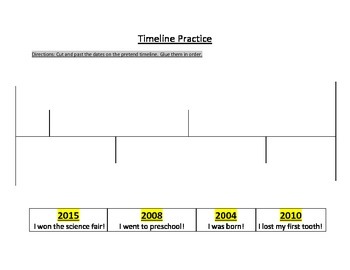

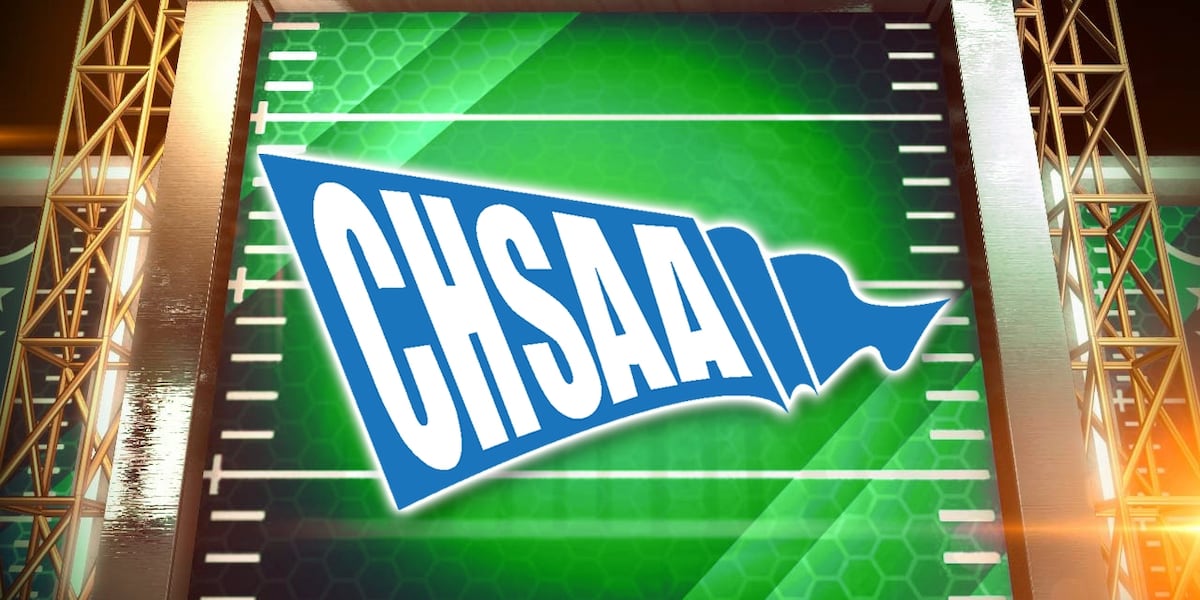
GRAND JUNCTION, Colo. (KKCO) – The Colorado High School Sports season still remain a ways away but some changes for next season are already in effect.
The Colorado High School Athletics Association (CHSAA) has implemented some of their new bylaws for the 2025-2026 school year
Some of the changes include sports like Ice Hockey potentially being able to practice on Sundays, so long as teams are not superseding six days of practice per week.
One of the big things addressed in the new bylaws is a clarification on the Amateur Status, specifically regarding use of Name Image & Likeness a.k.a. a buzz phrase in amateur athletics in 2025, NIL.
While no changes were made to CHSAA’s policy, they did tighten up the language to clarify the exact parameters for student athletes going forward.
Amateur Status (Name, Image & Likeness)Constitution & Bylaws, Article 20, Rules 2000.1-2000.8
- Clarification around amateur status was added to the bylaws. In summary, a student may benefit from the use of their name, image and likeness (NIL) provided the NIL is not connected to their CHSAA high school, team or activity program. Bylaw 2000.4 outlines additional guidelines around NIL.
“CHSAA’s goal with the updated NIL bylaw was simply to clarify, not change, what is already allowed. For the average high school athlete in Colorado, nothing new is being added or taken away. The updated language doesn’t expand or restrict NIL opportunities; it just makes the expectations and boundaries more clear. We recognized that the original bylaw left room for confusion, so this revision is about providing better guidance for athletes, families, and school administrators so that everyone has a shared understanding of what is and isn’t allowed. In short, student-athletes can still engage in NIL activities as long as they remain separate from school teams, school branding, or any association with CHSAA. The new bylaw just spells that out more clearly to support consistent application across the state,” CHSAA Director of Communications Amanda McClure said in a written statement.
You can find the full list of newly implemented bylines here.
Copyright 2025 KKCO. All rights reserved.
NIL
Bill in Congress would bar using student fees for athletics
Jul 10, 2025, 09:14 PM ET WASHINGTON — A bill to regulate college sports introduced in the House on Thursday would offer limited antitrust protection for the NCAA, while barring schools from using student fees to pay for college athletic programs. Co-sponsors of the SCORE Act includes seven Republicans and two Democrats, which gives the […]
WASHINGTON — A bill to regulate college sports introduced in the House on Thursday would offer limited antitrust protection for the NCAA, while barring schools from using student fees to pay for college athletic programs.
Co-sponsors of the SCORE Act includes seven Republicans and two Democrats, which gives the bill a fair chance of passage in the House. It would need at least seven Democratic votes in the Senate, where its chances are viewed as slim.
The bill includes the three elements the NCAA has lobbied for: antitrust protections, pre-emption of state laws that regulate name, image, likeness payments, and a section that prevents athletes from becoming employees of their schools.
The bill’s main goal is to set national standards for NIL payments that are dominating the industry in the wake of the approval of a $2.78 billion lawsuit settlement that allows schools to pay athletes.
It also includes a section that purports to protect Olympic programs that some see as threatened because of increased funding that will go to football and basketball. That part calls on schools with at least one coach who earns more than $250,000 to offer at least 16 sports programs. That language mirrors a rule already in effect for NCAA’s top-tier FBS schools.
The ban on using fees to offset costs strikes to the core of some schools’ plans to fund athletic programs, which are looking at ways to pay for the up to $20.5 million they’ll share with athletes.
Clemson earlier this year announced it would implement a $150 “athletic fee” each semester for students starting this fall. Fresno State approved fees of an additional $495 a year, about half of which is to be directed toward athletics.
Other schools, like Tennessee, have announced a “talent fee” to be added to season-ticket renewals. Arkansas is increasing concession prices and many more schools are informing boosters about the increasing price tag for the sports programs they support.
NIL
NCAA Tournament expansion would hurt college basketball, March Madness
Lamont Butler, Andrew Carr on Kentucky’s NCAA transfer portal hopes Following a 78-65 loss to Tennessee in the 2025 NCAA men’s basketball March Madness tournament, Kentucky players Lamont Butler and Andrew Carr made the case for other athletes to transfer to UK. If approved it will feel like college basketball is becoming college football, where […]
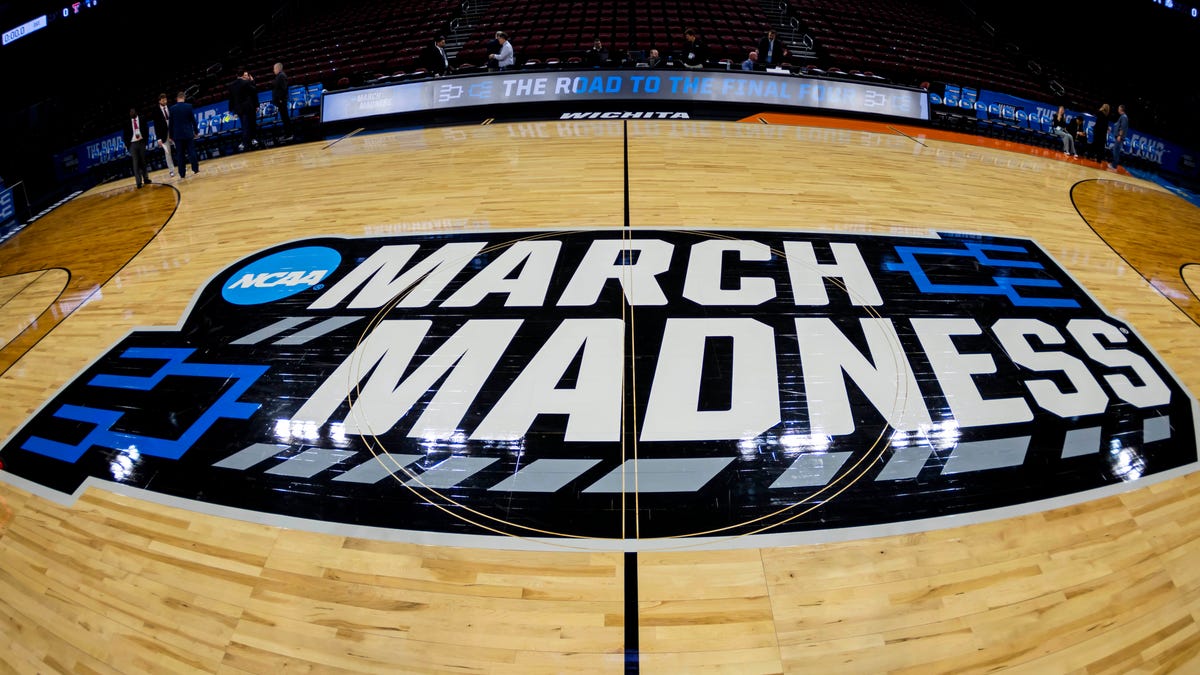
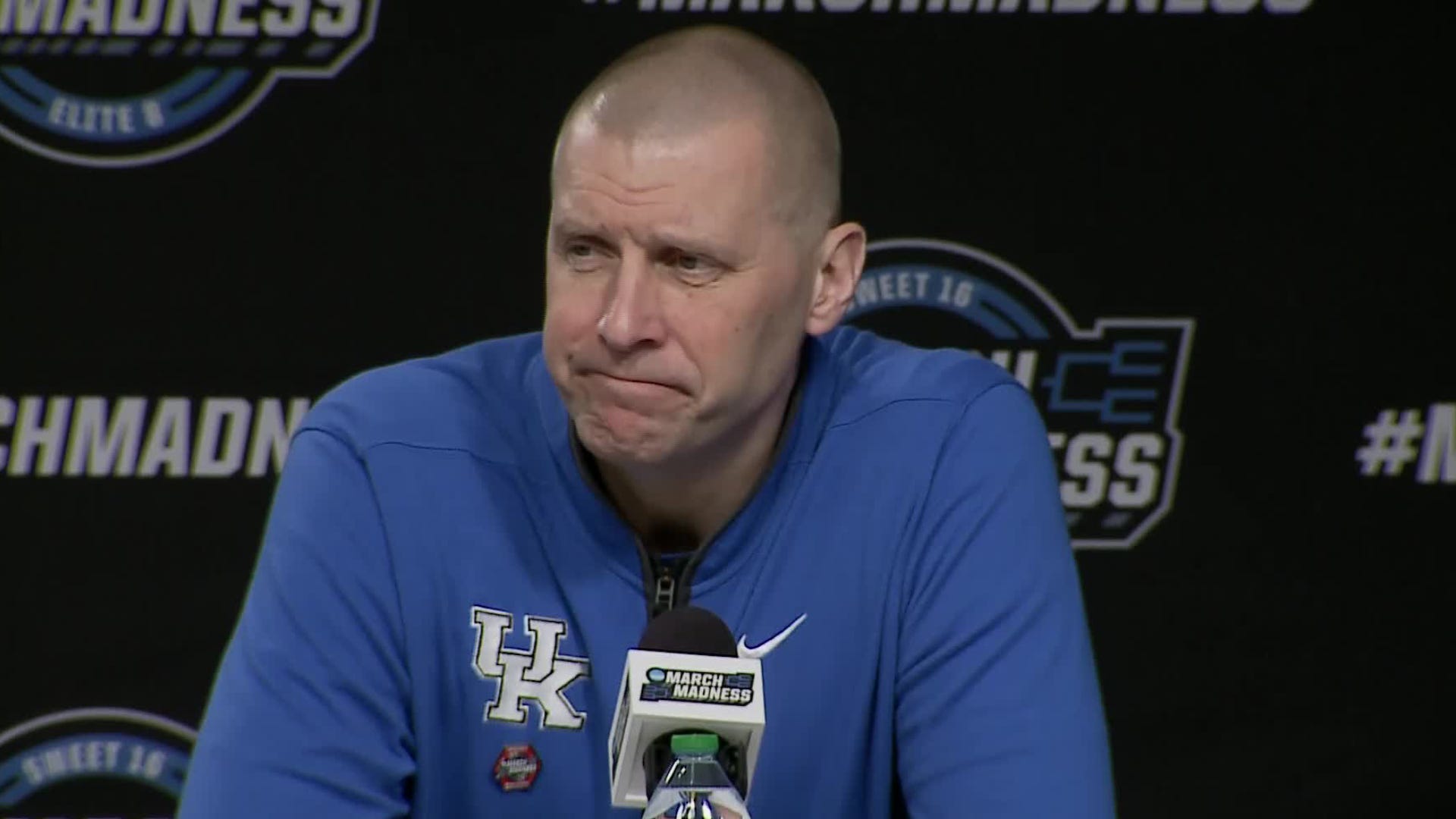
Lamont Butler, Andrew Carr on Kentucky’s NCAA transfer portal hopes
Following a 78-65 loss to Tennessee in the 2025 NCAA men’s basketball March Madness tournament, Kentucky players Lamont Butler and Andrew Carr made the case for other athletes to transfer to UK.
- If approved it will feel like college basketball is becoming college football, where mediocrity is rewarded with bowl trips.
- It’s not just the men’s game that will change, the NCAA women’s basketball tournament would also expand.
Tournament expansion sits squarely as the biggest item on the agenda as the NCAA Division I men’s basketball committee meets in Savannah, Georgia. Any hour now, there could be an announcement that the nation’s best championship sporting event, the NCAA Tournament, will be adding an additional four or eight teams.
For some reason, it seems like they’re clamoring to make college basketball like college football.
The Football Bowl Subdivision watered down its game with the proliferation of so many bowl games. A team that goes 6-6 is now rewarded with a trip, sometimes bowl rings for the winners, all for finishing the regular season without a losing record.
What helped make the tournament’s popularity explode and what turned March into madness was because it was not like college football. It was watching schools many viewers had never heard of, like St. Peter’s in 2022, knock off historical giants like Kentucky.
NCAA Tournament expansion ultimately won’t ruin the collective love for the Big Dance, but that doesn’t mean it’s the right thing to do. Far from it.
It should be tougher to make the tournament, not easier.
As of last season there were 35 bowl games played that were not involved in the College Football Playoff. That means 70 of 134 (52%) teams competing in the Football Bowl Subdivision made the postseason.
One of the arguments present for expanding is that Division I basketball now has 364 schools. That’s about 80 more schools than there were full time in Division I back in 1985 when the tournament expanded to 64 teams.
Bellarmine was among a recent wave of schools reclassifying to Division I. The Knights are not a reason to expand. Had it not been for the NCAA’s arbitrary transition period making them ineligible, they would have already participated in the Big Dance having won the 2022 Atlantic Sun Conference tournament.
The list of new Division I schools hasn’t created a plethora of new conferences taking away automatic bids. And they haven’t added much in terms of winning to the mix either. According to CBS Sports, Division I schools added since 1985 have won only 19 games in the first round or later out of 2,520 games played.
A less publicly stated reason for expansion is about revenue. The NCAA could ask for a bump in its broadcast rights for more games and, in turn, pass those earnings on to the participants. A few coaches that live on the hot seat can tout making the tournament and survive another year.
But those added games aren’t likely to bring any added excitement.
So, please forgive me if I can’t get behind the expansion talk. I can’t be too thrilled that a team like Ohio State, which finished 17-15 last season and was one of the first four out, will be receiving a bid if the field increases to at least 72 teams.
There will be collateral damage, too.
Although the men’s basketball committee is doing the voting, the women’s basketball tournament will follow suit, if approved.
As much as the women’s game is evolving and growing, there is not an extra four or more worthy teams each season that should get bids to the tournament.
Since the First Four was introduced in the women’s tournament in 2022, only one of the eight teams that advanced to the round of 64 has won a game.
Mississippi State won in 2023 as an 11 seed, toppling No. 6 seed Creighton, before losing to No. 3 seed Notre Dame in the second round. There has been no team like UCLA that went from an 11 seed in the 2021 First Four to the Final Four.
As it stands, the gap is still incredibly wide between the top seeds and those that sneak into the women’s tournament. Expanding it will just make for more meaningless and unwatchable games.
Reach sports columnist C.L. Brown at clbrown1@gannett.com, follow him on X at @CLBrownHoops and subscribe to his newsletter at profile.courier-journal.com/newsletters/cl-browns-latest to make sure you never miss one of his columns.
NIL
Ranking top-50 freshmen in EA Sports College Football 26 video game
EA Sports College Football 26 officially dropped on Thursday, marking the second consecutive year of the game’s release. The video game made its return last summer for the first time in over a decade. While EA did not release a full official list, On3 went looking through the video game’s rosters to compile the top-50 freshmen […]

EA Sports College Football 26 officially dropped on Thursday, marking the second consecutive year of the game’s release. The video game made its return last summer for the first time in over a decade.
While EA did not release a full official list, On3 went looking through the video game’s rosters to compile the top-50 freshmen in this year’s edition. It’s worth noting that not every top-ranked high school recruit entering the 2025 season opted in to the game in time to make the intial release date. For example, Ohio State cornerback and No. 6 overall recruit Devin Sanchez is not featured in the game.
For the second time in EA Sports College Football’s history, athletes are being compensated for having their name, image and likeness. That also means on-field performances are being factored into the players’ ratings. Here’s the full breakdown of the top-50 freshmen in EA Sports College Football 26:
1. Oregon WR Dakorien Moore – 84 Overall
The top-ranked freshman in the game, Dakorien Moore, enters the 2025 season with high expectations. Previously committed to LSU and Texas, the Ducks were able to pull the wide receiver from Texas. With Evan Stewart expected to miss time this season, Moore is thrust into a big-time role in Year 1 at Oregon. Over his four-year high school career at Duncanville (Texas), he caught 204 passes, amassing 4,113 yards and 48 touchdowns while averaging better than 20 yards per catch.
2. Clemson RB Gideon Davidson – 83 Overall
Already being tabbed as one of the top running backs in the ACC, Gideon Davidson is expected to contribute immediately this fall at Clemson. Quarterback Cade Klubnik compared Davidson to Clemson great Travis Etienne in fall camp. A four-star recruit in the Class of 2025, the running back finished his high school career with 7,438 rushing yards on 701 career carries with a 10.53-yard average and 118 rushing touchdowns.
3. LSU RB Harlem Berry – 83 overall
The most electric running back in the 2025 cycle, Harlem Berry, has flashed the ability to be a game-changer in the passing game, too. The 5-foot-10, 182-pound running back was heavily utilized in the spring as returners Caden Durham and Kaleb Jackson were the only players getting as many reps as him. He is expected to immediately be a factor in LSU’s passing game. He topped the 2,000-yard mark for rushing yards all four years of high school.
4. Clemson DL Amare Adams – 82 overall
At 6-foot-4 and 315 pounds, Amare Adams was as a top-five defensive linemen in the 2025 cycle. The top-ranked recruit in the state of South Carolina, Adams collected 250 career tackles, 40 tackles for loss and 14 sacks in his high school career. The Tigers have a deep defensive line with Peter Woods and T.J. Parker returning, but Adams will be a contributor as a true freshman.
5. Georgia DL Elijah Griffin – 82 overall
Ranked by On3 as the No. 1 defensive lineman in the class of 2025, Elijah Griffin has turned heads since the minute he arrived at Georgia. He posted 53 tackles, 27 tackles for loss and 8.5 sacks as a senior in 2024 at Savannah Christian Preparatory School.
“[Defensive lineman] Elijah Griffin is a bulletproof prospect. Really talented, really driven, one of the best I’ve been around. Maturity, habits — this guy is a pro,” a source told On3 in the winter.
6. Texas RB James Simon – 81 overall
Ranked as the No. 10 running back in the 2025 class in the On3 Industry Ranking, James Simon left Louisiana for the state of Texas as a recruit. As a senior at Calvary Baptist Academy, he rushed for 1,280 yards and 16 touchdowns on 149 carries. He averaged 8.6 yards per carry and logged six 100-yard rushing performances.
7. Maryland ATH Zymear Smith – 81 overall
Zymear Smith was ranked as a top-10 athlete nationally as a recruit, picking Maryland over Penn State and South Carolina. A one-time Alabama commit, Smith carried the ball 71 times for 609 yards and 7 touchdowns while also catching nine passes for 380 yards and four touchdowns as a senior at Denton (Md.) North Caroline. He’s listed as a wide receiver on Maryland’s roster and a running back in EA Sports College Football 26.
8. Texas WR Kaliq Lockett – 81 overall
Kaliq Lockett ranked as the No. 20 overall prospect in the 2025 On3 Industry Ranking. The five-star recruit is the highest-ranked wide receiver commit of the Steve Sarkisian era. The 6-foot-1, 175-pound wide receiver gives the Longhorns a big-body wideout on the outside. He caught 47 passes for 625 yards and seven touchdowns as a senior at Sachse (Texas).
9. Kansas State TE Linkon Cure – 81 overall
The biggest win for Kansas State in the 2025 recruiting cycle, Linkon Cure, will immediately be a top target for quarterback Avery Johnson. Cure picked the Wildcats at the end, even with Oregon making a big-time push. The 6-foot-4.5, 225-pound tight end with a 32-inch arm and 10-inch hand finished his senior season with 1,049 yards and 17 touchdowns on 57 catches in just nine games.
10. Michigan QB Bryce Underwood – 81 overall
On3’s No. 1 recruit in the 2025 class, Bryce Underwood, stunned the nation last November when he flipped his commitment from LSU to Michigan. The 6-foot-4, 214-pound quarterback finished his high school career with a 50-4 record, winning state championships as a freshman and sophomore. He broke the Michigan high school football records for career passing and total touchdowns.
11. Auburn DL Malik Autry – 81 overall
12. Miami RB Girard Pringle Jr. – 81 overall
13. Florida WR Vernell Brown – 80 overall
14. Texas WR Jaime Ffrench – 80 overall
15. Alabama RB AK Dear – 80 overall
16. Texas DL Justus Terry – 80 overall
17. Alabama OL Michael Carroll – 80 overall
18. Texas A&M OL Lamont Rogers – 80 overall
19. Georgia OL Juan Gaston – 80 overall
20. LSU CB DJ Pickett – 80 overall
21. Georgia Tech RB JP Powell – 80 overall
22. Florida WR Dallas Wilson – 80 overall
23. Ohio State QB Tavien St. Clair – 80 overall
24. Alabama QB Keelon Russell – 80 overall
25. Ohio State RB Bo Jackson – 80 overall
26. Tennessee OL David Sanders – 80 overall
27. Georgia EDGE Isaiah Gibson – 80 overall
28. Oregon RB Dierre Hill – 80 overall
29. Texas CB Kade Phillips – 80 overall
30. Alabama CB Dijon Lee – 79 overall
31. Texas A&M TE Kiotti Armstrong – 79 overall
32. Florida State DL Kevin Wynn – 79 overall
33. Miami EDGE Hayden Lowe – 79 overall
34. Oklahoma OL Michael Fasusi – 79 overall
35. UCLA RB Karson Cox – 79 overall
36. Penn State RB Tikey Hayes – 79 overall
37. Colorado QB Julian Lewis – 79 overall
38. Texas EDGE Lance Jackson – 79 overall
39. Texas WR Daylan McCutcheon – 79 overall
40. UCF RB Taevion Swint – 79 overall
41. Utah RB Daniel Bray – 79 overall
42. Missouri RB Marquise Davis – 79 overall
43. Miami OL SJ Alofaituli – 78 overall
44. Syracuse S Demetres Samuel – 78 overall
45. USC CB Trestin Castro – 78 overall
46. Washington OL Champ Taulealea – 78 overall
47. Penn State TE Andrew Olesh – 78 overall
48. Cincinnati RB Zion Johnson – 78 overall
49. Georgia LB Zayden Walker – 78 overall
50. Florida EDGE Jalen Wiggins – 78 overall
NIL
NIL TURMOIL
Big 12 shakeup: NIL deals, conference expansion, and playoff dreams collide. Is college football’s landscape shifting before our eyes? Author: kcentv.com Published: 1:07 AM CDT July 11, 2025 Updated: 1:07 AM CDT July 11, 2025 0
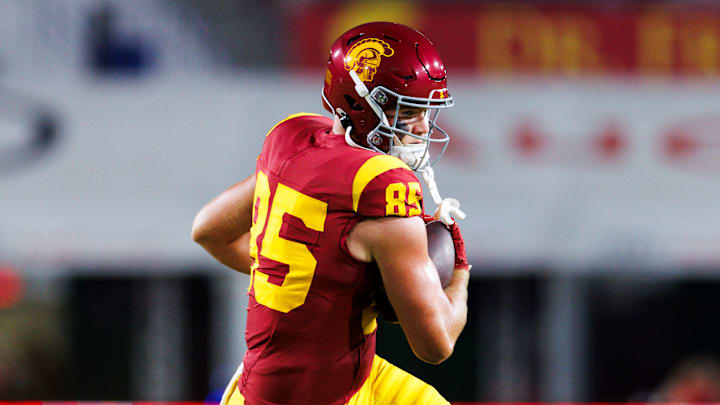
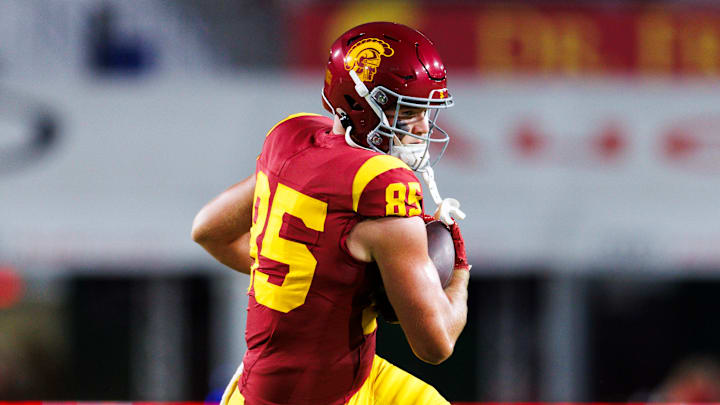
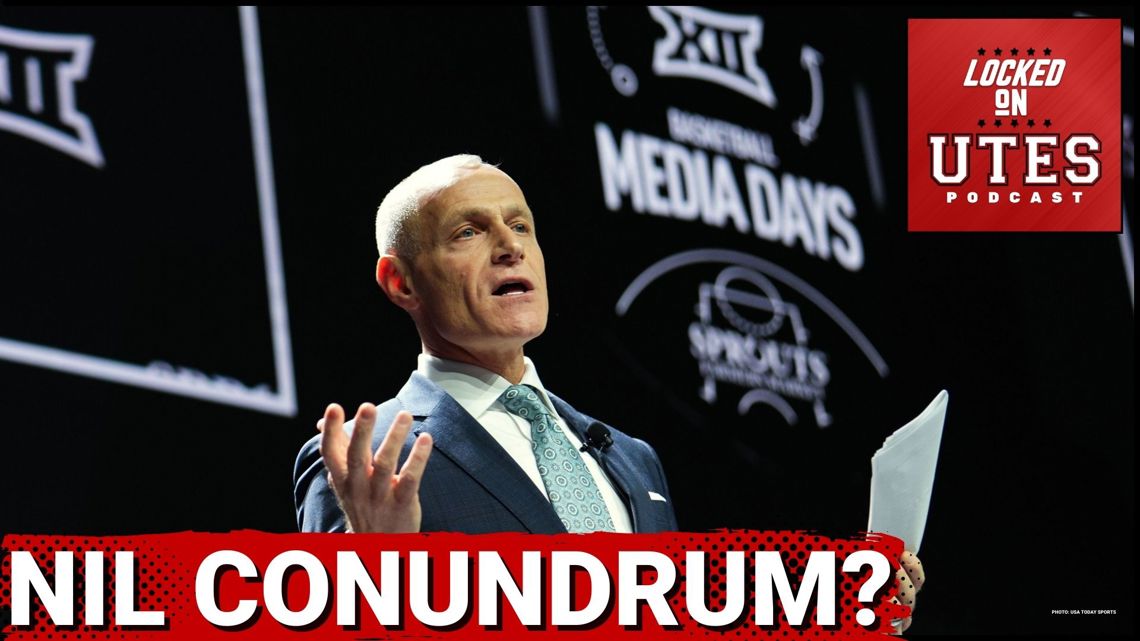
Big 12 shakeup: NIL deals, conference expansion, and playoff dreams collide. Is college football’s landscape shifting before our eyes?
-

 Technology2 weeks ago
Technology2 weeks agoPet fitness and wellness trends for a healthier and happier dog
-

 College Sports2 weeks ago
College Sports2 weeks agoWAC to Rebrand to UAC, Add Five New Members in 2026
-

 Motorsports2 weeks ago
Motorsports2 weeks agoWhy Cosmetics are Making Up for Lost Time in Women’s Sports
-

 Professional Sports3 weeks ago
Professional Sports3 weeks agoAlex Pereira responds to rumors of UFC heavyweight title fight with threatening message
-

 College Sports3 weeks ago
College Sports3 weeks agoAlabama Basketball
-

 Professional Sports3 weeks ago
Professional Sports3 weeks agoFrancis Ngannou sends Dana White a message following Jon Jones' shock UFC retirement
-

 College Sports2 weeks ago
College Sports2 weeks agoA new era of Dickinson hockey begins behind the bench – The Dickinson Press
-

 Sports3 weeks ago
Sports3 weeks agoSEC Conference imposing a fine will create the opposite effect.
-

 Motorsports2 weeks ago
Motorsports2 weeks agoNASCAR This Week – Patriot Publishing LLC
-

 Health2 weeks ago
Health2 weeks agoFlorida assault survivor shares hope for change with new mental health law






























